Working with files
Understanding how to work with files and folders is an important part of using your computer. Once you understand how files and folder work, you'll use them all the time. In this lesson, we'll show you the absolute basics of working with files, including how to open files打开文件, move your files into folders 移动文件, and delete files 删除文件.
Watch the video below to learn more about using files and folders in Windows.
What is a file?
There are many different types of files 文件类型 you can use. For example, Microsoft Word documents, digital photos, digital music, and digital videos are all types of files. You might even think of a file as a digital version of a real-world thing you can interact with on your computer. When you use different applications, you'll often be viewing 查看, creating 创建, or editing files 编辑文件.
Files are usually represented by an icon. In the image below, you can see a few different types of files below the Recycle Bin on the desktop.
What is a folder?
Windows uses folders 文件夹(文件目录) to help you organize files. You can put files inside a folder, just like you would put documents inside a real folder. In the image below, you can see some folders on the desktop.
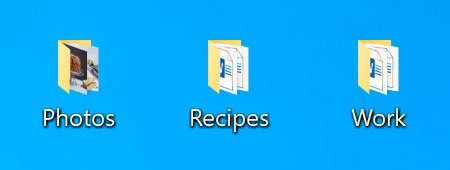
File Explorer
You can view and organize files and folders using a built-in application known as File Explorer 文件浏览器(资源浏览器) (called Windows Explorer in Windows 7 and earlier versions).
To open File Explorer, click the File Explorer icon on the taskbar, or double-click any folder on your desktop. A new File Explorer window will appear. Now you're ready to start working with your files and folders.
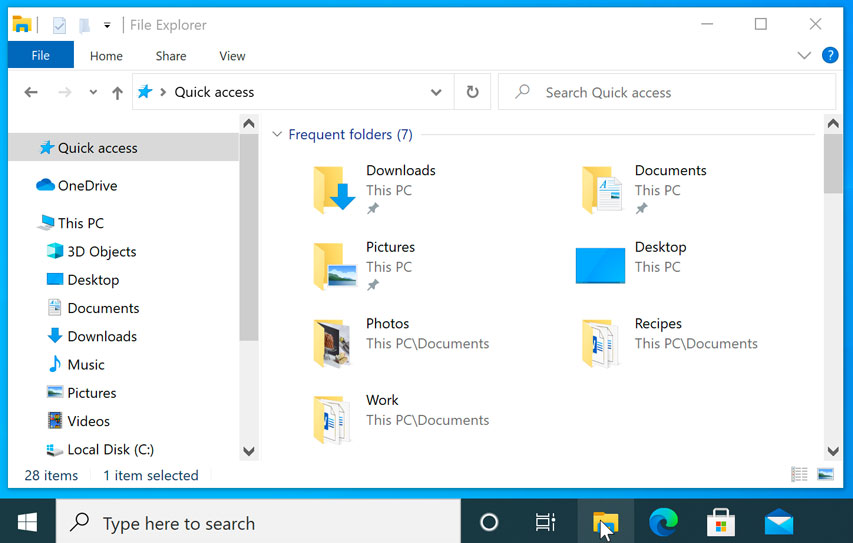
From File Explorer, double-click a folder to open it. You can then see all of the files stored in that folder.
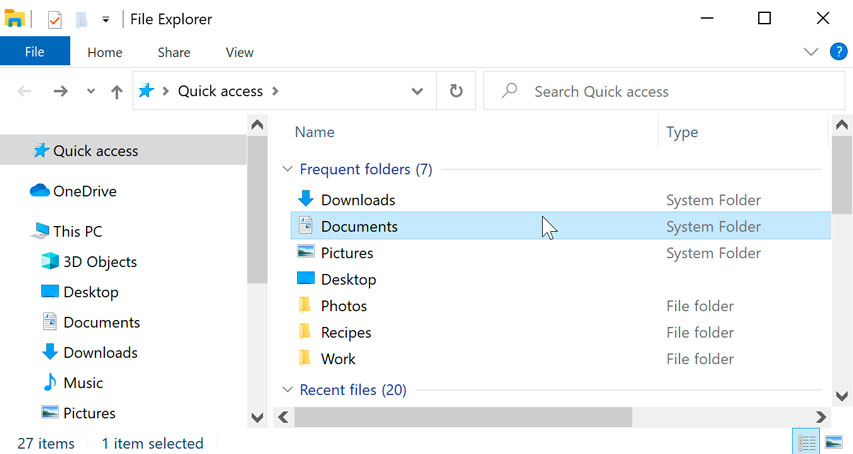
Notice that you can also see the location of a folder in the address bar 地址栏 near the top of the window.
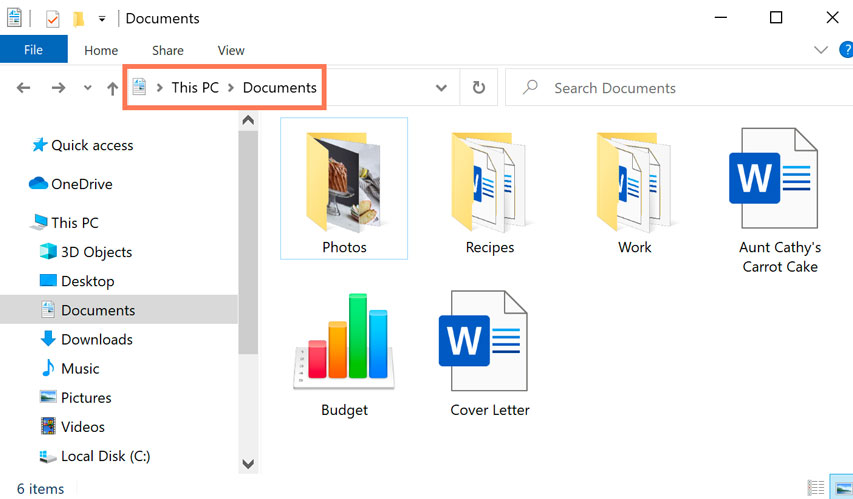
To open a file:
There are two main ways to open a file:
- Find the file on your computer and double-click it(双击打开文件). This will open the file in its default application. In our example, we'll open a Microsoft Word document (Cover Letter.docx), which will open in Microsoft Word.
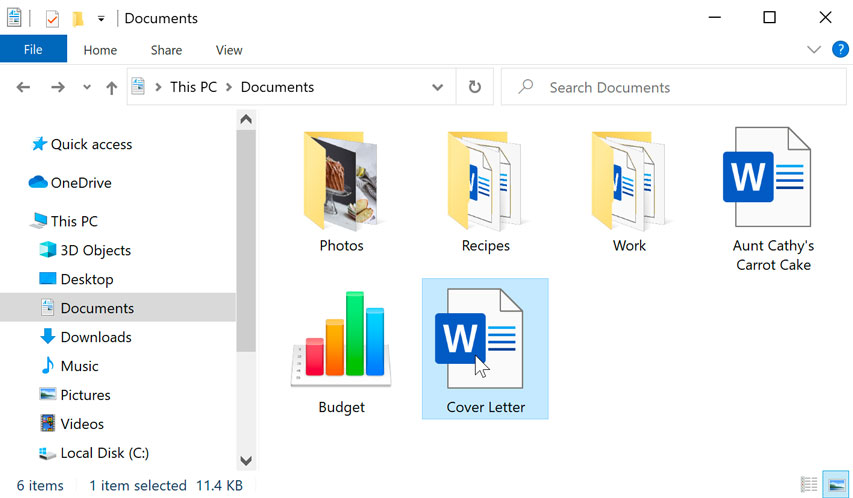
- Open the application, then use the application to open the file. Once the application is open, you can go to the File menu at the top of the window and select Open.
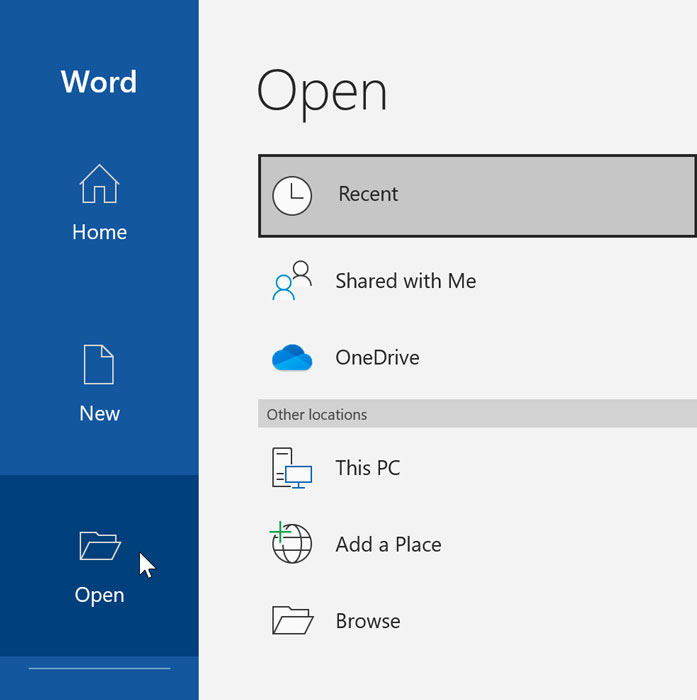
Moving and deleting files
As you begin using your computer, you will start to collect more and more files, which can make it more difficult to find the files you need. Fortunately, Windows allows you to move files 移动文件 to different folders and delete files 删除文件 you no longer use.
To move a file:
It's easy to move a file from one location to another. For example, you might have a file on the desktop that you want to move to your Documents folder.
- Click and drag the file to the desired location.
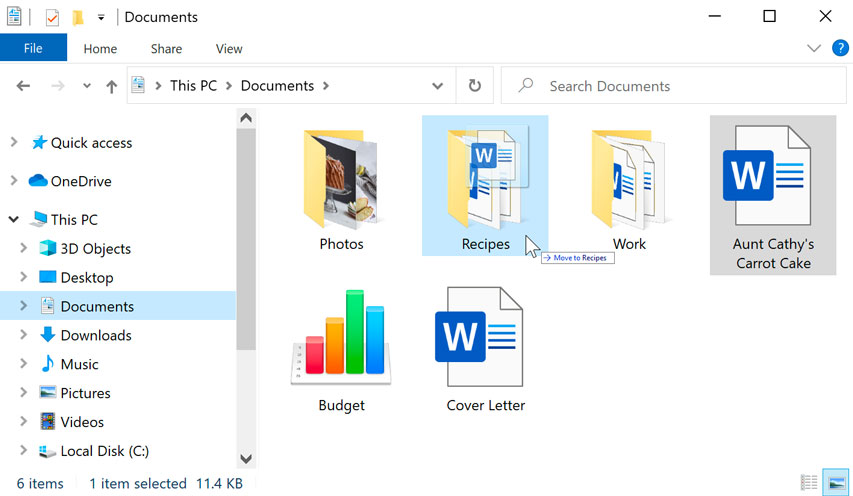
- Release the mouse. The file will appear in the new location. In this example, we have opened the folder to see the file in its new location.
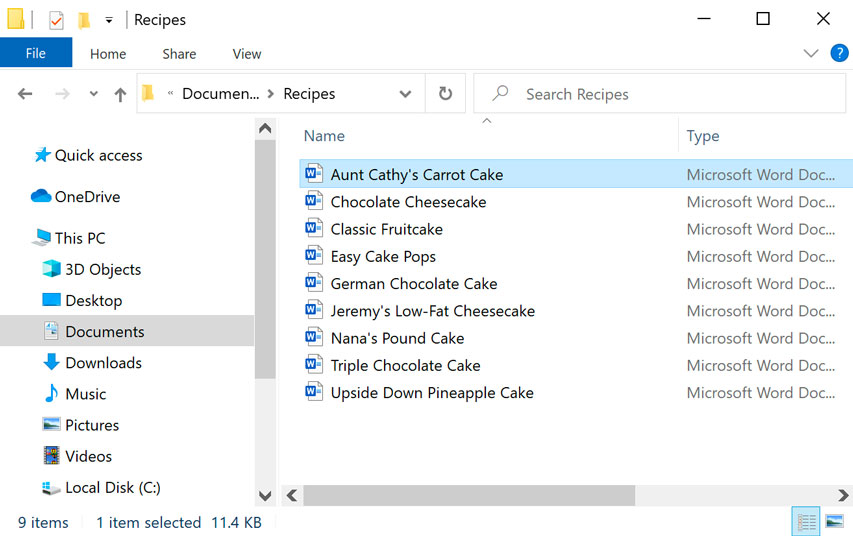
You can use this same technique to move an entire folder. Note that moving a folder will also move all of the files within that folder.
To create a new folder 创建新文件:
- Within File Explorer, locate and select the New folder button. You can also right-click where you want the folder to appear, then select New > Folder.
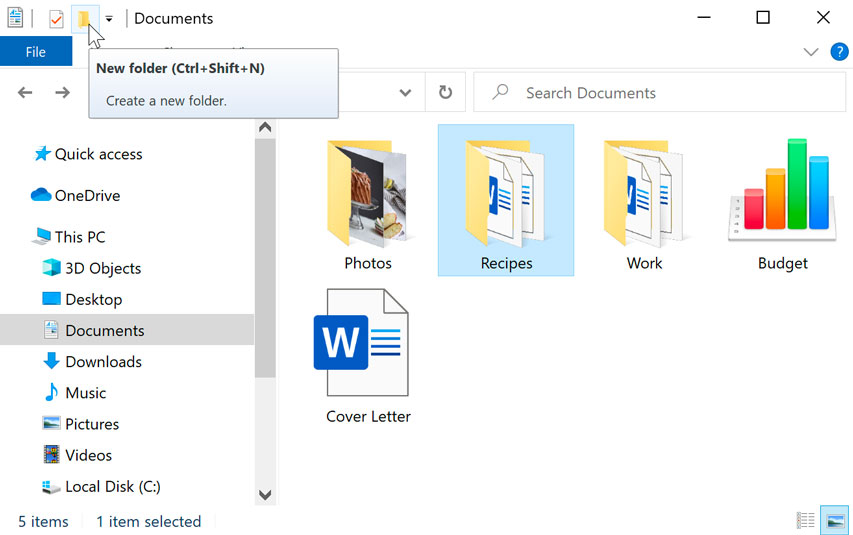
- The new folder will appear. Type the desired name for the folder and press Enter. In our example, we'll call it School Documents.
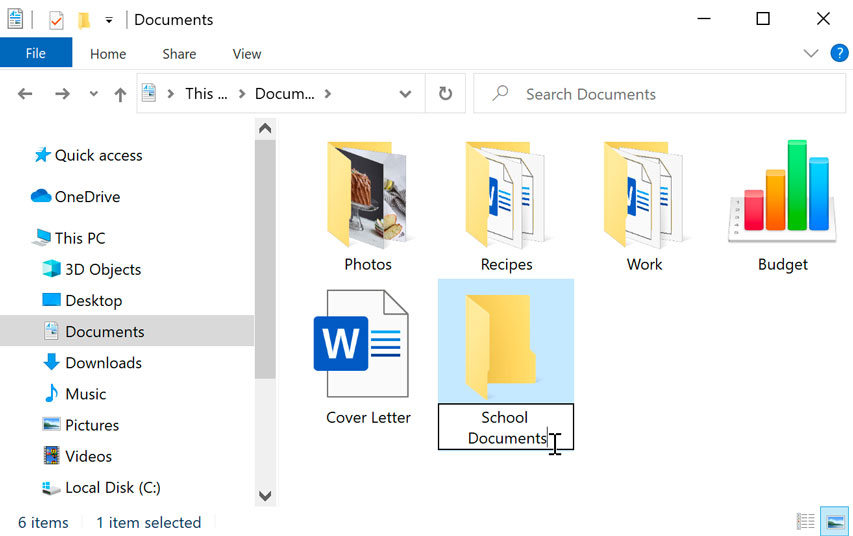
- The new folder will be created. You can now move files into this folder.
To rename a file or folder:
You can change the name of any file or folder. A unique name will make it easier to remember what type of information is saved in the file or folder.
- Click the file or folder, wait about one second, and click again. An editable text field will appear.
- Type the desired name on your keyboard and press Enter. The name will be changed.
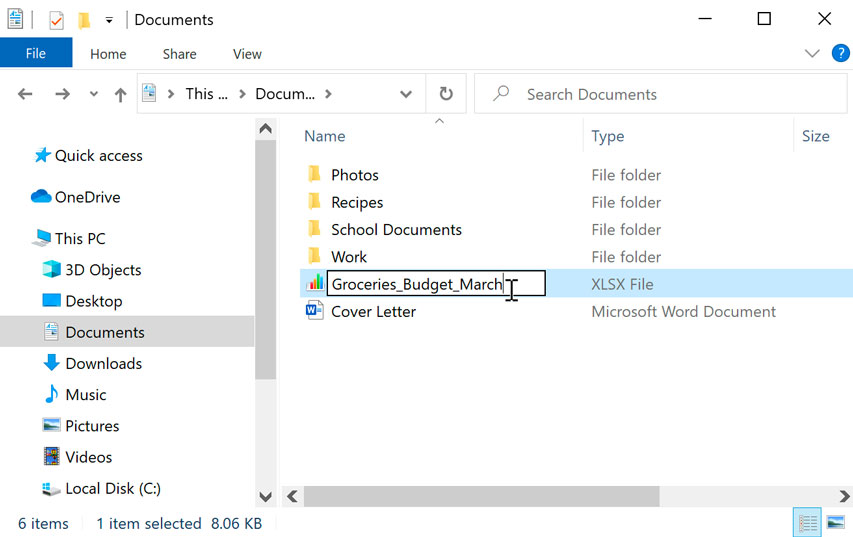
You can also right-click the folder and select Rename 重命名 from the menu that appears.
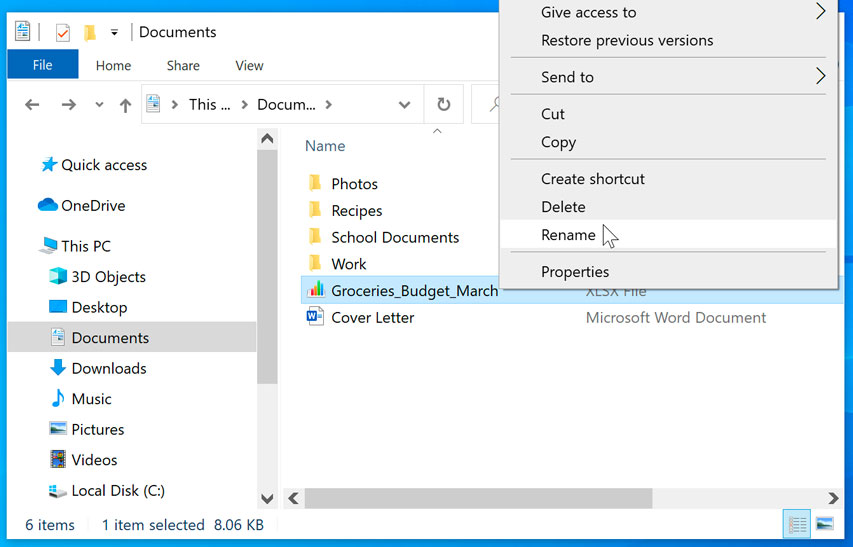
To delete a file or folder:
If you no longer need to use a file, you can delete it. When you delete a file, it is moved to the Recycle Bin 回收站 . If you change your mind, you can move the file from the Recycle Bin back to its original location. If you're sure you want to permanently delete the file, you will need to empty the Recycle Bin.
- Click and drag the file to the Recycle Bin icon on the desktop. You can also click the file to select it and press the Delete key on your keyboard.
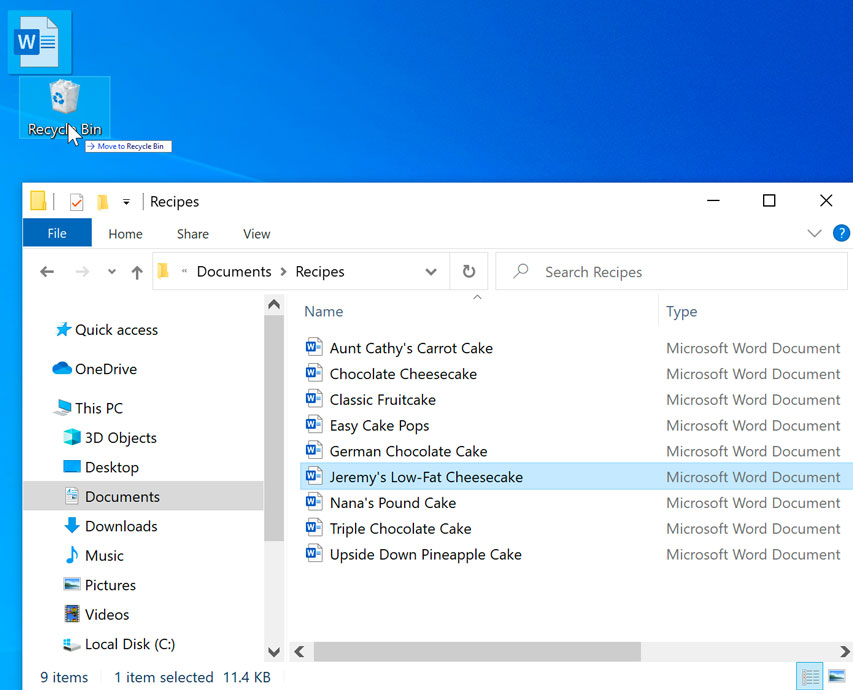
- To permanently delete the file, right-click the Recycle Bin icon and select Empty Recycle Bin. All files in the Recycle Bin will be permanently deleted.
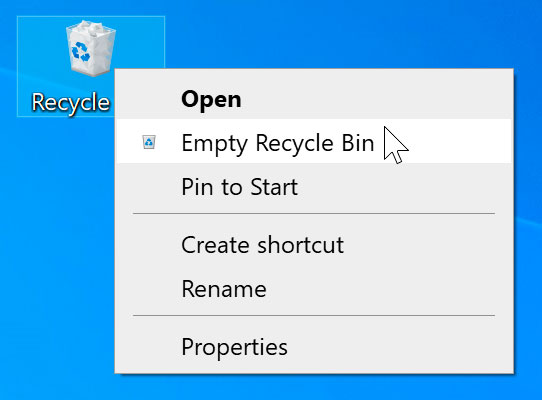
Note that deleting a folder will also delete all of the files within that folder.
Selecting multiple files
Now that you know the basics, here are a few tips to help you move your files even faster.
Selecting more than one file
There are a few ways to select more than one file at a time:
- If you're viewing your files as icons, you can click and drag the mouse to draw a box around the files you want to select. When you're done, release the mouse; the files will be selected. You can now move, copy, or delete all of these files at the same time.
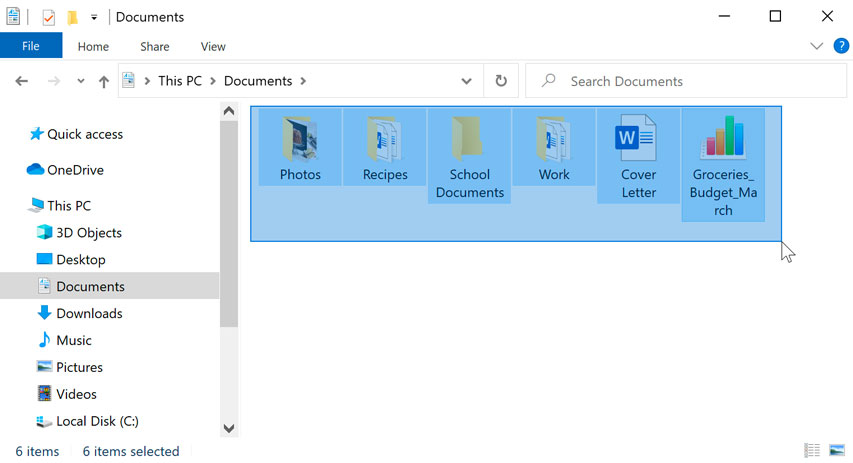
- To select specific files from a folder, press and hold the Control key on your keyboard, then click the files you want to select.
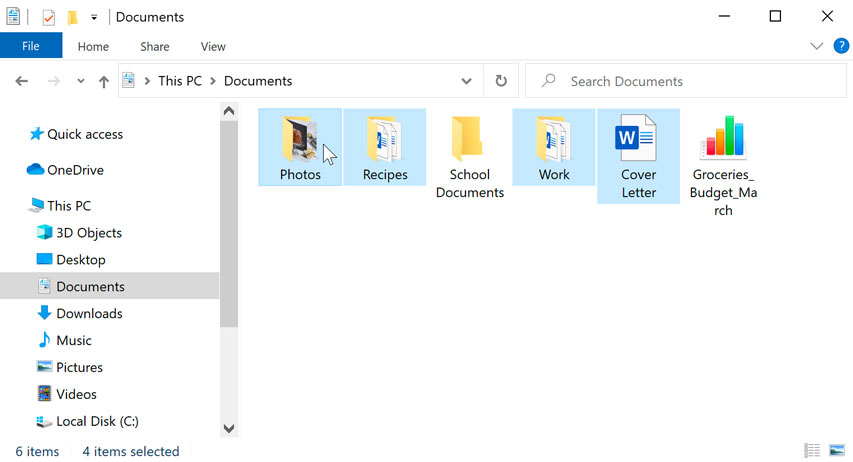
- To select a group of files from a folder, click the first file, press and hold the Shift key on your keyboard, then click the last file. All of the files between the first and last ones will be selected.
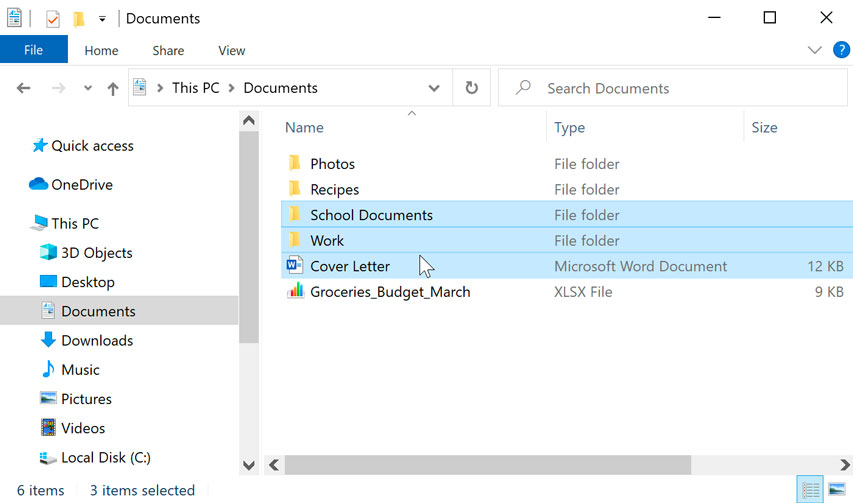
Selecting all files
If you want to select all files in a folder at the same time, open the folder in File Explorer and press Ctrl+A (press and hold the Control key on your keyboard, then press A). All of the files in the folder will be selected.
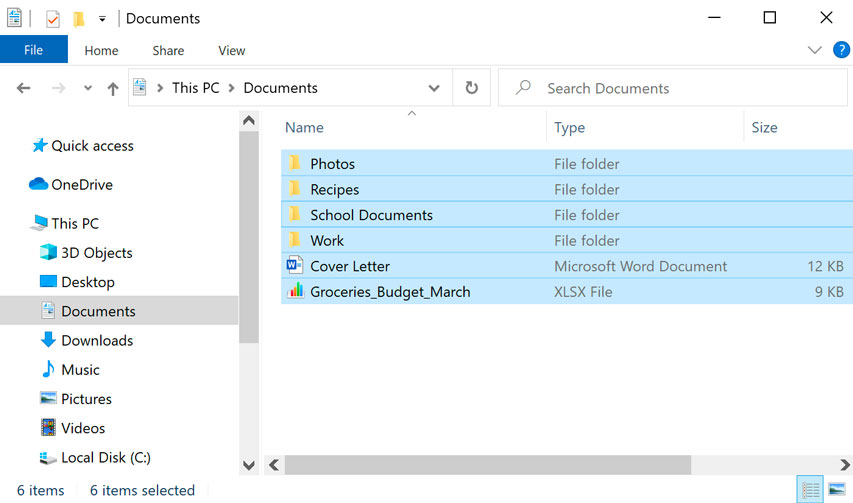
Ctrl+A is an example of a keyboard shortcut. We'll talk more about these in our lesson on Keyboard Shortcuts in Windows.
If working with files and folders feels a little tricky right now, don't worry! Like anything else, working with files and folders is largely a matter of practice. You'll start to feel more comfortable as you continue using your computer. In the next lesson, we'll talk about another important concept: how to find files on your computer that you can't easily locate.
Shortcuts
If you have a file or folder you use frequently, you can save time by creating a shortcut on the desktop. Instead of navigating to the file or folder each time you want to use it, you can simply double-click the shortcut to open it. A shortcut will have a small arrow in the lower-left corner of the icon.
Note that creating a shortcut does not create a duplicate copy of the folder; it's simply a way to access the folder more quickly. If you delete a shortcut, it will not delete the actual folder or the files it contains. Also note that copying a shortcut onto a flash drive will not work; if you want to bring a file with you, you'll need to navigate to the actual location of the file and copy it to the flash drive.
To create a shortcut 快捷方式:
- Locate and right-click the desired folder, then select Send to Desktop (create shortcut).
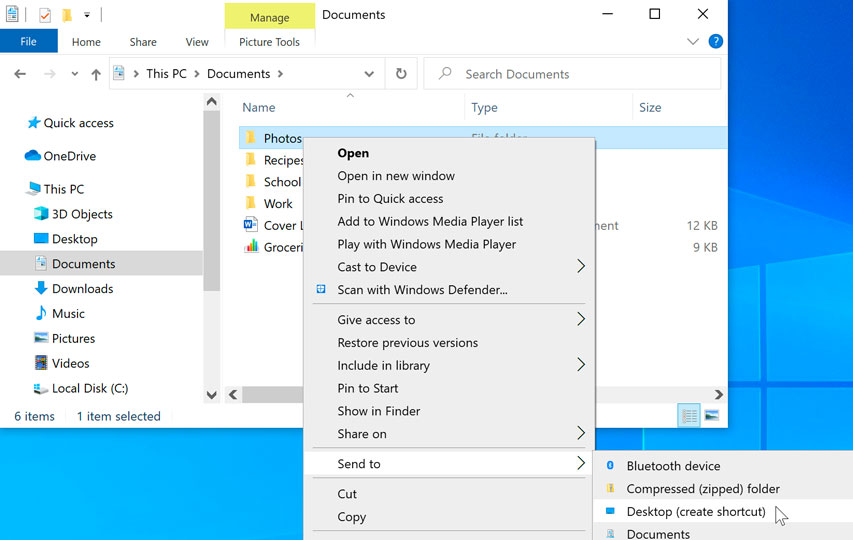
-
A shortcut to the folder will appear on the desktop. Notice the arrow in the lower-left corner of the icon. You can now double-click the shortcut to open the folder at any time.
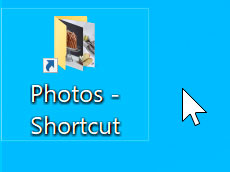
You can also hold the Alt key on your keyboard, then click and drag the folder to the desktop to create a shortcut.
标签:Files,files,Basics,Windows,click,will,file,folder,your From: https://www.cnblogs.com/emanlee/p/18185473